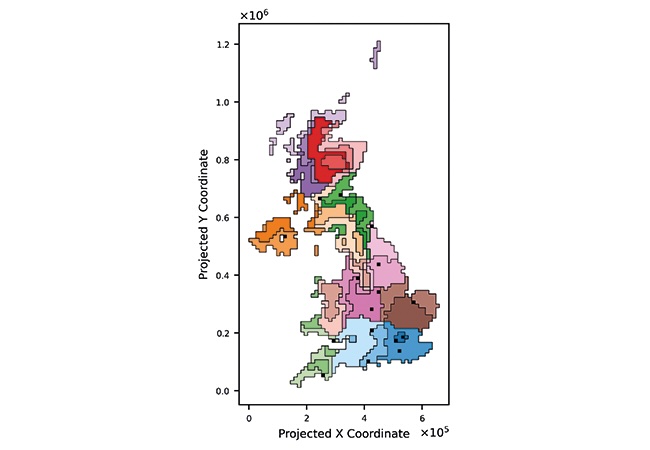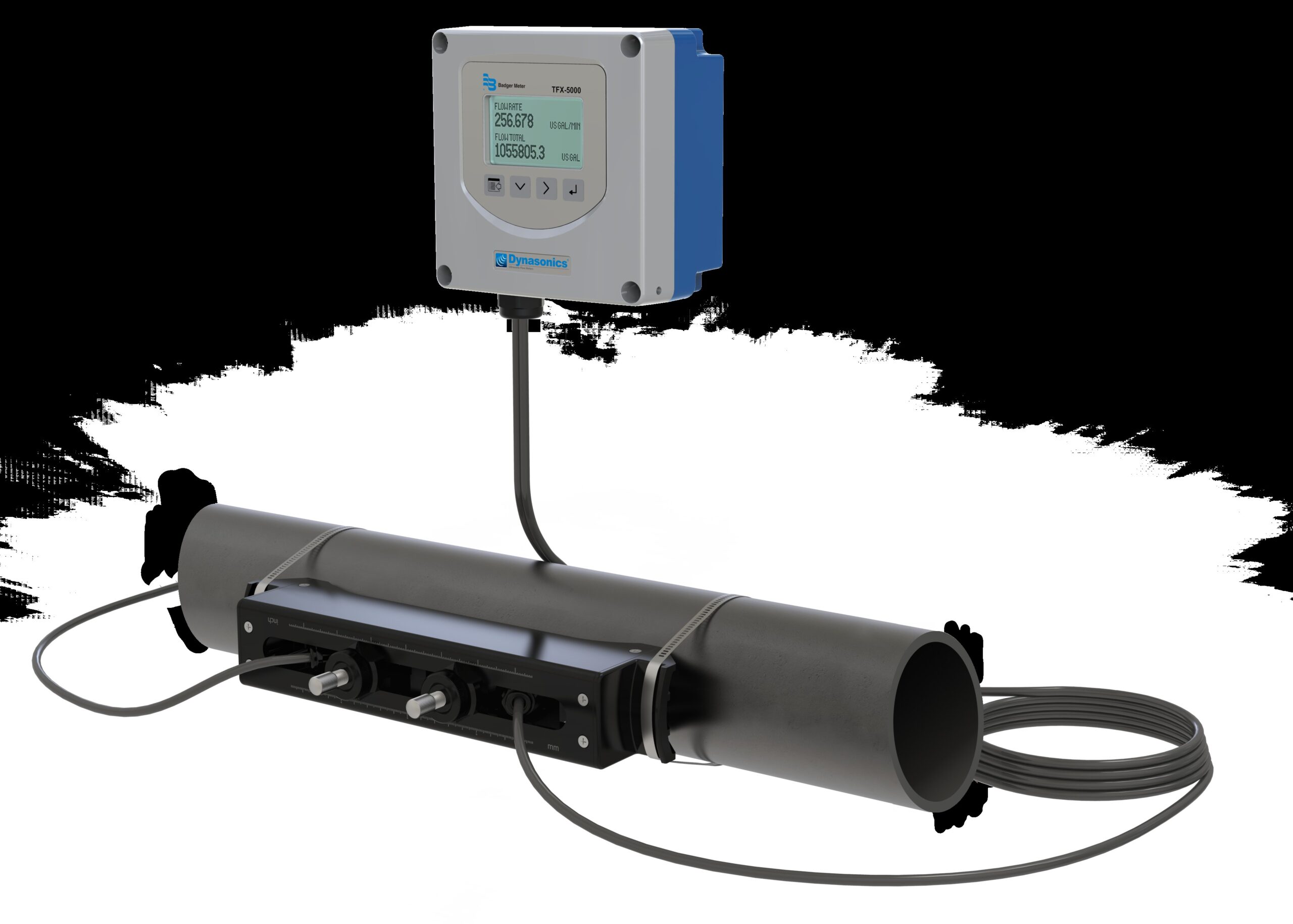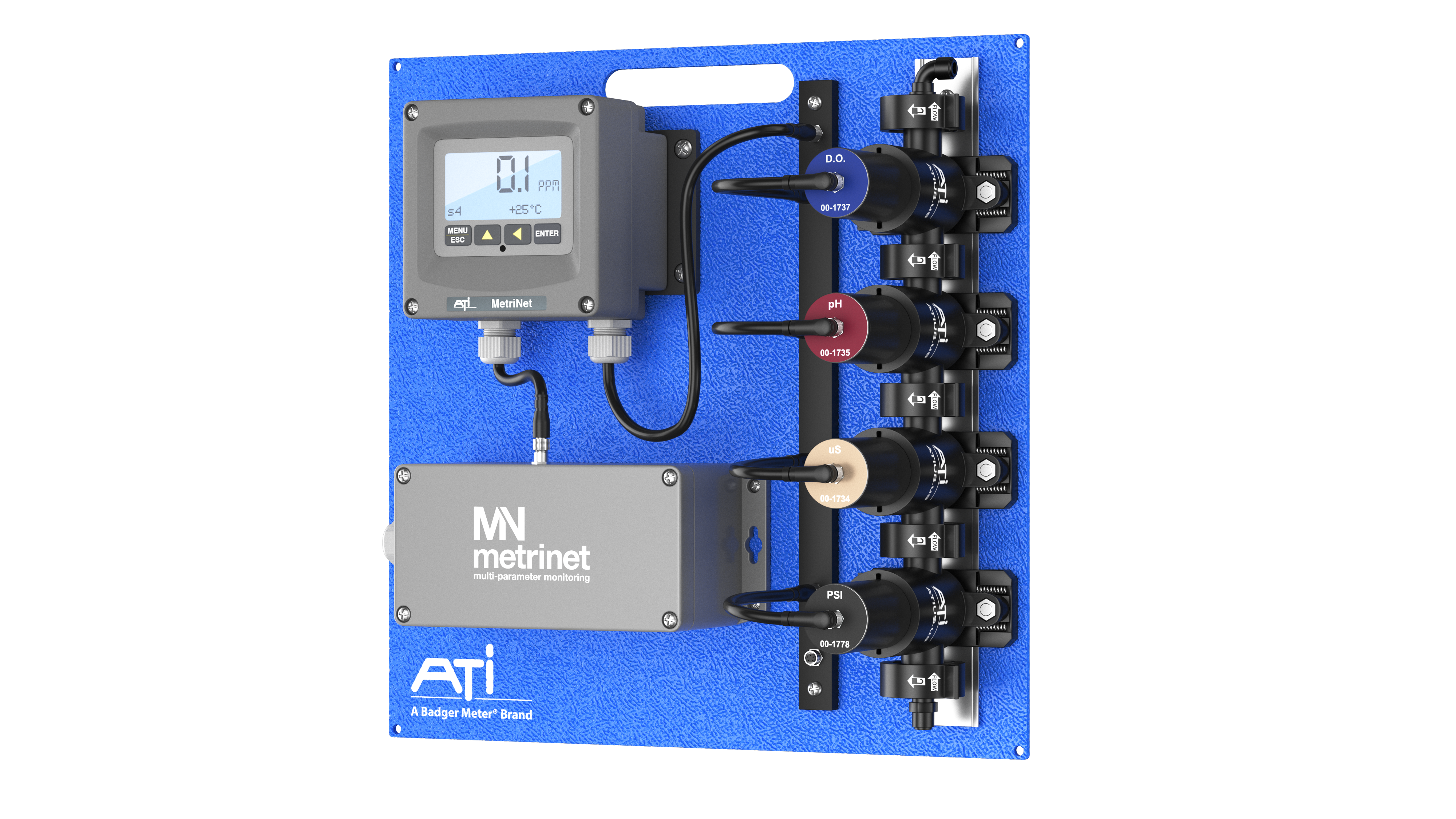
Figure 1: New Weather Data zone map. Black squares identify the city-based locations of CIBSE’s previous UK weather files
Overheating in buildings remains a pressing issue in the UK, driven by rising average temperatures and more frequent and intense heatwaves caused by climate change.
A recent study by the University of East London (bit.ly/CJExHe25), which surveyed 1,580 households about the 2022 heatwave – when UK temperatures reached a record 40°C – found that 82% of households reported overheating. The study revealed a sharp rise in the use of air conditioning as a coping strategy, increasing from just 3% in 2011 to 20% in 2022, with 81% installing units between 2022 and 2023.
This growing reliance on active cooling in a housing stock largely designed for natural ventilation raises significant concerns about energy demand, affordability and resilience.
To optimise building design and minimise cooling, accurate and up-to-date weather data is essential.
CIBSE’s 2025 Weather Data incorporates the latest climate science and offers more granular, location-specific datasets. It is a vital resource for analysing building performance, enabling robust assessments of energy and overheating risk.
These files will not be required for compliance purposes when launched; however, CIBSE hopes that, once adopted by the industry, they will be considered by policymakers.
They were developed through a Knowledge Transfer Partnership (KTP) between CIBSE and the University of Exeter, with CIBSE KTP associate Hailun Xie playing a key role in advancing the methodologies used to generate the weather files.
The 2025 release has been tested by Loughborough University, led by Professor Kevin Lomas, with oversight and input from Inkling, Arup, and other industry and policy experts. The testing aimed to ensure logical and consistent variations in key weather metrics, both spatially and temporally, and to compare differences in energy use and overheating risk between the 2025 and 2016 datasets. The results are being prepared for publication.
Similar to the 2016 release, two types of Weather Data files are provided: test reference years (TRYs) and design summer years (DSYs). TRYs represent a typical weather year and are intended for annual energy assessments, while DSYs contain various hot-weather events and are crucial for conducting overheating risk assessments.
There are three DSY file types:
- DSY1: a moderate year containing heat events with a return period of seven years.
- DSY2: the year containing the most intense heat events.
- DSY3: the year containing the longest heat events.
CIBSE will provide TRYs and DSYs for the 2030s (representative of 2019-39), 2050s (2039-59), and 2080s (2069-89). The 2030s timeline will replace the existing ‘current’ weather files, and the 2050s and 2080s timelines will form the new future Weather Data package. For more on emissions scenarios read this article online.
The new Weather Data files are now available.
What’s new?
- More up-to-date baseline: the historical 30-year observation data used for the creation of the Weather Data files has been updated from 1984-2013 to 1994-2023, using primarily Met Office observations.
- UK Climate Projections 2018 (UKCP18): baseline files have been morphed to UKCP18 climate projections released by the UK Met Office, to create the 2030s, 2050s and 2080s weather files (bit.ly/CJMAW25)
- Improved solar radiation data: incomplete data has been supplemented with Copernicus Atmosphere Monitoring Service data.
- Improved UK climate representation: there is now data for 28 climatic zones across the UK that are more representative of the local climate (Figure 1) (bit.ly/4kQOUuq)
- CIBSE Weather Data shop: users will be able to identify quickly which of the 28 zones is the appropriate one for their project.
For more information and to access the Weather Data visit: WeatherData



